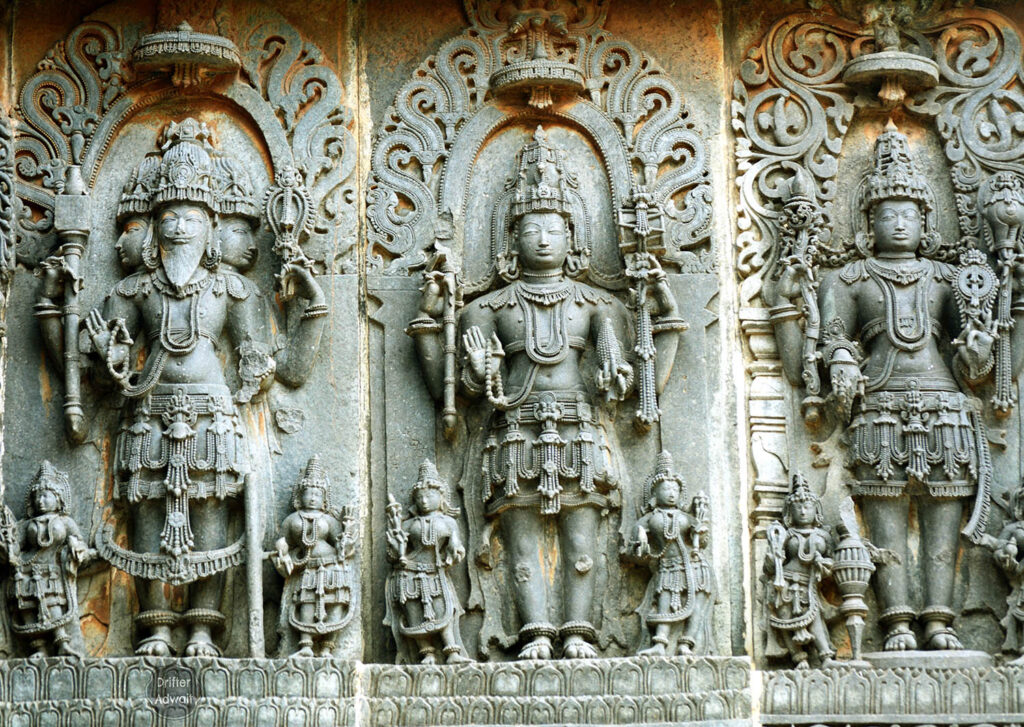
Lingodbhav Shiv-Enchanting tale involving war of Shri Vishnu & Brahmaji, Shiv appearing as a celestial pillar & birth of Bhairava.
Within the Sanatan texts, Lord Brahma is not lauded for his combat prowess, but rather for his role as the architect of the cosmos. Yet, amidst the legendary clashes between divinities and demons chronicled in the epic Mahabharata, Brahma emerges as a notable observer of the tumultuous events. In this tale from our Puranas, however, you shall bear witness to Brahma both taking up arms and succumbing to falsehoods.
Many eons had passed since the Purvakalpa had dawned. It was during this time that Shri Vishnu lay slumbering upon the serpent Shesha. Suddenly, Brahma materialized before him. As the architect of the cosmos, Brahma was accustomed to being revered by all who laid eyes upon him. Thus, he took umbrage when he discovered that Shri Vishnu continued with his pursuits, barely acknowledging Brahma’s very presence.
The Heated Debate
Brahma took offense. He said,
“कस्त्वं पुरुषवच्छेषे दृष्ट्वा मामपि दृप्तवत्। उत्तिष्ठ वत्स मां पश्य तव नाथमिहागतम् ॥
आगतं गुरुमाराध्यं दृष्ट्वा यो दृप्तवच्चरेत् । द्रोहिणस्तस्य मूढस्य प्रायश्चित्तं विधीयते ॥
इति श्रुत्वा वचः क्रुद्धो बहिः शान्तवदाचरन् । स्वस्ति ते स्वागतं वत्स तिष्ठ पीठमितो विश ॥“
“Who are you Oh arrogant man? Even after my arrival how you could be still sitting? Dear, get up, and greet your Lord, Me! There is a way of ablution for those who insult their great Gurus. “
Even after this arrogant statement, keeping his cool, Shri Vishnu welcomed Brahma and offered a throne to him. Reacting to Hari’s calm demeaner, Brahma replied, you must have forgotten that I am the father of the world, and you are under my protection. To that, Shri Hari replied,
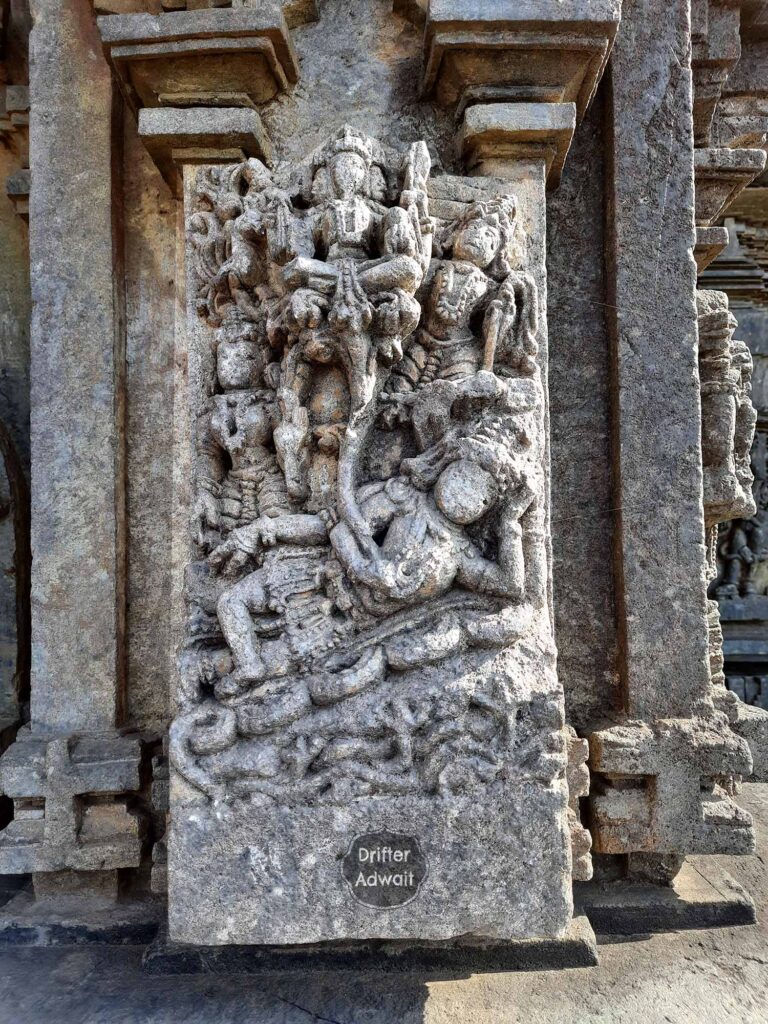
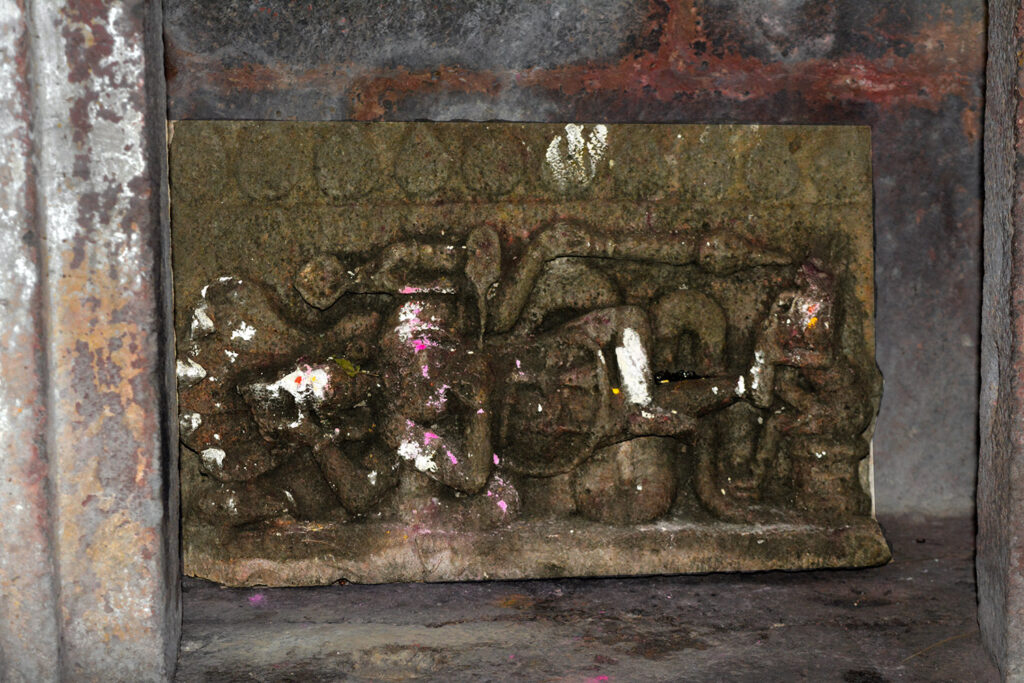
“मन्नाभिकमलाज्जातः पुत्रस्त्वं भाषसे वृथा। एवं हि वदतोस्तत्र मुग्धयोरजयोस्तदा ॥“
“As you have been emerged through a lotus that have been rooted in my naval, you are my son, and you are saying illogical things”.
The debate took a rather dark turn, and in no time,
“युयुधातेऽमरौ वीरौ हंसपक्षीन्द्रवाहनौ । वैरञ्च्या वैष्णवाश्चैवं मिथो युयुधिरे तदा ॥“
“Riding on the swan and Garuda, those both braves started a war, and ganas (pupil) from each side participated in that war of the nurturer and the creator of the universe”.
With furious intensity, they launched a volley of deadly celestial weapons at each other. The heavenly pantheon convened to behold the cataclysmic combat that unfolded between these two titans. Agni Astra and other lethal arms were hurled, each one seeking to pierce the heart of the other. Witnessing this spectacle, the gods grew restless, their hearts laden with deep sorrow. And then, the inevitable occurred…
ततो विष्णुः सुसंक्रुद्धः श्वसन् व्यसनकर्शितः। माहेश्वरास्त्रं मतिमान् सन्दधे ब्रह्मणोपरि ॥
ततो ब्रह्मा भृशं क्रुद्धः कम्पयन् विश्वमेव हि । ॥ अस्त्रं पाशुपतं घोरं सन्दधे विष्णुवक्षसि ॥ ततस्तदुत्थितं व्योम्नि तपनायुतसन्निभम्। सहस्रमुखमत्युग्रं चण्डवातभयङ्करम् ॥
अस्त्रद्वयमिदं तत्र ब्रह्मविष्ण्वोर्भयङ्करम् ॥
While calming himself, Shri Vishnu took a deep breath, and recalled fierce Maheshwar Astra, aiming Brahma. At the same time, being furious, Brahma recalled the macabre Pashupat Astra, aiming at Shri Vishnu’s heart, agitating the entire universe. Both the celestial weapons, that were like a thousand sons combined with dangerous thunderstorms appeared in the skies.
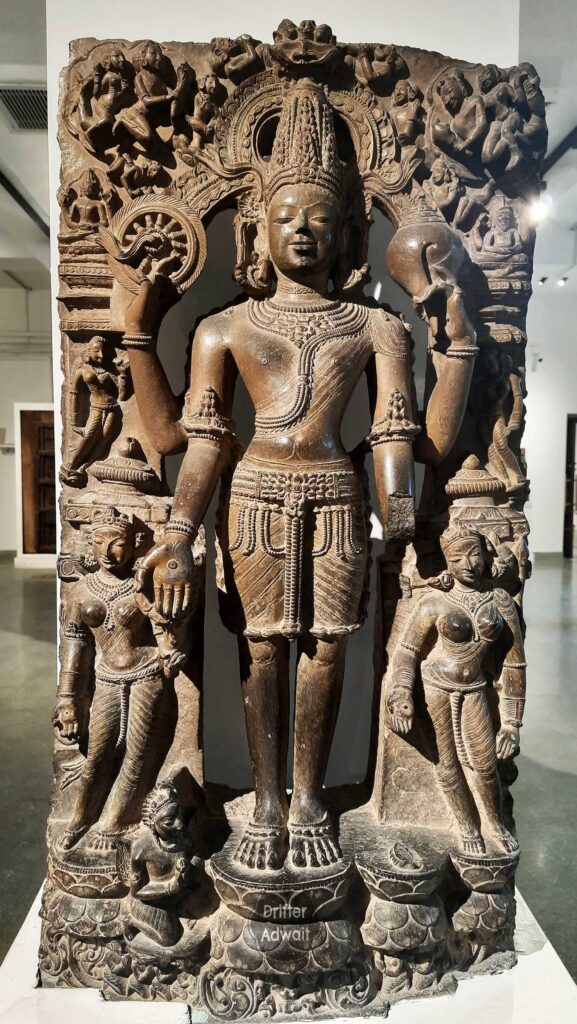

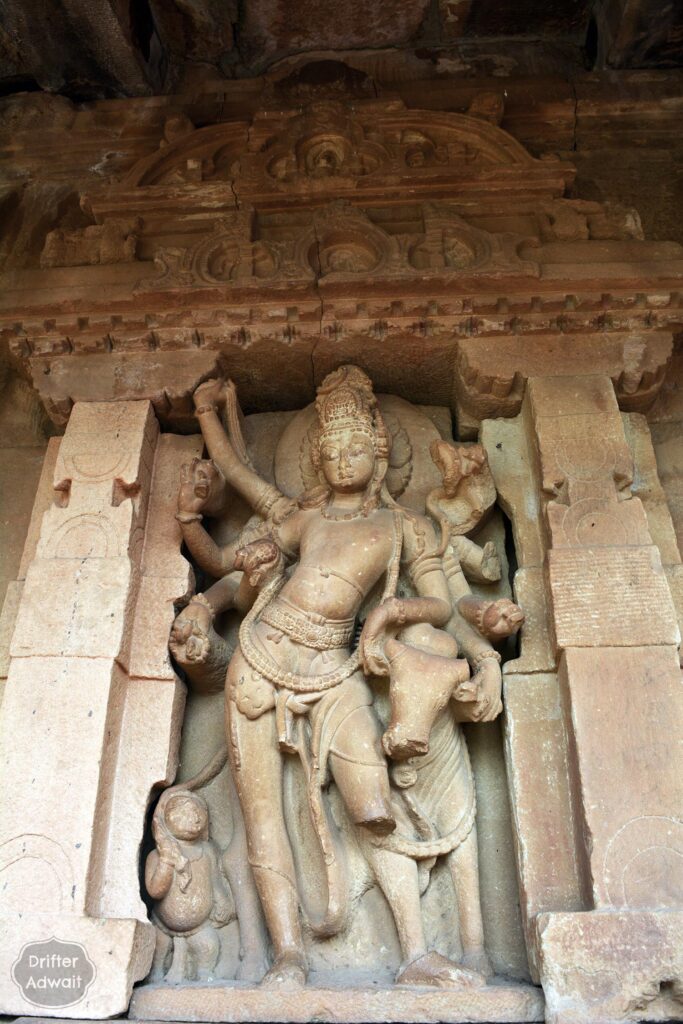
The onlookers could scarcely believe their eyes, as they beheld the prospect of universal annihilation looming before them. Fearing the end of all existence, they raced to Kailas – the divine abode of Mahadev – to recount the harrowing events. Accompanied by his heavenly band of Ganas, who played a symphony of instruments, Mahadev hastened to the site of the great battle. Confronted with the grim reality that these two deities would rend the world asunder, Mahadev bade his Ganas to silence their music, and in an instant, he vanished from that battlefield.
Emergence of a Giant Pillar and the Bet
ईशोऽपि तं निरीक्ष्याथ ह्यकालप्रलयं भृशम् । महानलस्तम्भविभीषणाकृतिर्बभूव तन्मध्यतले स निष्कलः ॥
ते अस्त्रे चापि सज्वाले लोकसंहरणक्षमे । निपेततुः क्षणेनैव ह्याविर्भूते महानले ॥
दृष्ट्वा तदद्भुतं चित्रमस्त्रशान्तिकरं शुभम् । किमेतदद्भुताकारमित्यूचुश्च परस्परम् ॥
The incorporeal Mahadev, seeing this impending holocaust, appeared between them in the form of a giant fiery pillar. Both those celestial weapons, capable of destroying the world, immediately calmed down as soon as that great pillar of fire appeared with its radiance. Seeing this wondrous and auspicious (Agnistambh) which had pacified the divine weapons- all the existing beings started to wonder about this amazingly shaped pillar.
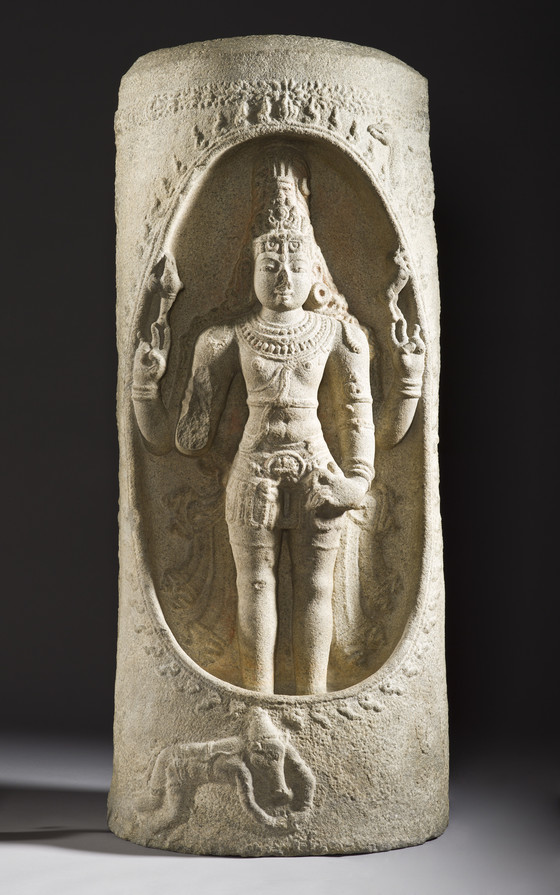
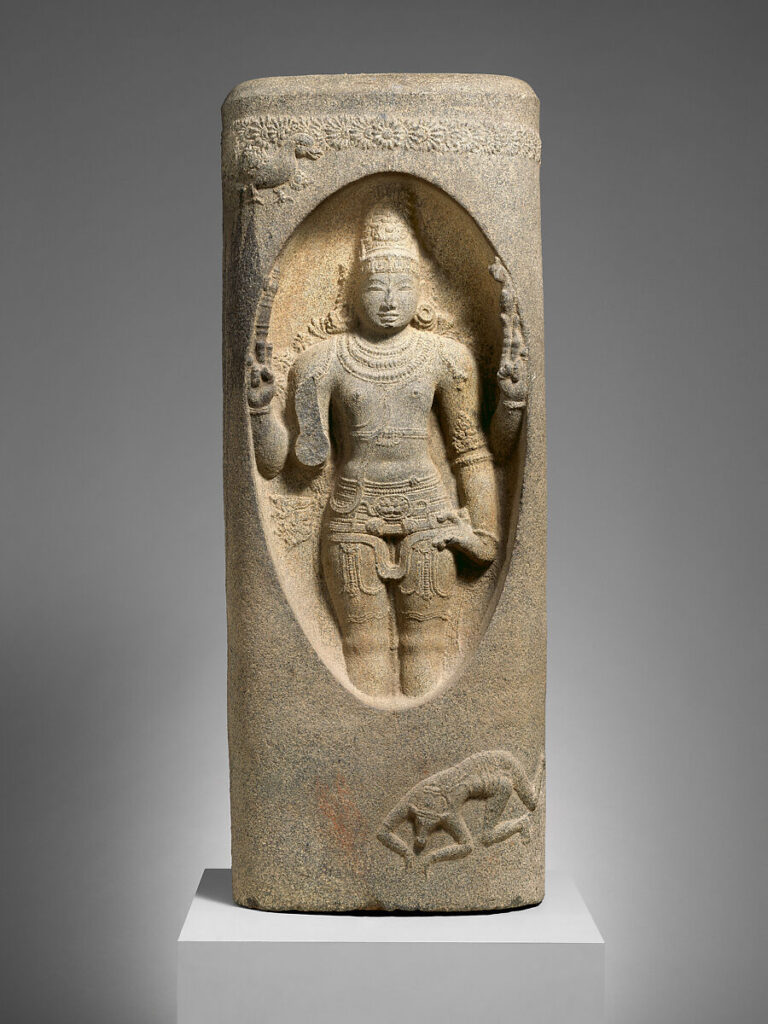
Simply amazed by this phenomenon, both of those worriers set aside their war and decided to check out the things unfolding in front of them. Seeing the sheer magnitude of the pillar emerged in front,
आवयोर्मिश्रयोस्तत्र कार्यमेकं न सम्भवेत् । इत्युक्त्वा सूकरतनुर्विष्णुस्तस्यादिमीयिवान्॥
तथा ब्रह्मा हंसतनुस्तदन्तं वीक्षितुं ययौ । भित्त्वा पातालनिलयं गत्वा दूरतरं हरिः ॥
नापश्यत्तस्य संस्थानं स्तम्भस्यानलवर्चसः । श्रान्तः स सूकरहरिः प्राप पूर्वं रणाङ्गणम् ॥
This work will not be accomplished if both of us stay together-saying this, Shri Vishnu took the form of a boar and went in search of its root. Similarly, Brahma also assumed the form of a swan and set out to find its end. Shri Vishnu could not see the base of the pillar that was bright as fire, even after digging a long distance into the Paatal Loka. Then Sukrakriti (boar formed) Vishnu returned to the battlefield exhausted.
As Brahmaji journeyed through the sky, he chanced upon a magnificent Ketaki (Kevda) flower cascading down his path. Despite having fallen for countless years, its freshness and fragrance remained unmatched. Inquisitive, Brahmaji addressed the celestial blossom, “Oh Pushparaj! Who had held you captive, and why have you descended from your lofty abode?”
“I have been falling from the middle of this ancient and irrational pillar for a long time, still could not fathom its origin. Therefore, you should also give up the hope of seeing the end of this column.” -replied that gorgeous flower.
Brahmaji declared, “Behold, I have transformed into a swan and ventured forth to witness the end of this pillar. However, my dear friend, you must comply with my wishes. Accompany me to Vishnu and proclaim, ‘Brahma has beheld the end of this structure. Oh Achyut! I bear witness to this fact.'” With a humble bow, Brahma beseeched the Ketaki flower and reassured it that in times of great need, even false testimony can be deemed virtuous – as per the scriptures. Turning towards Shri Hari, Brahmaji relayed his message,
स्तम्भाग्रमेतत् समुदीक्षितं हरे तत्रैव साक्षी ननु केतकं त्विदम् । ततोऽवदत्तत्र हि केतकं मृषा तथेति तद्धातृवचस्तदन्तिके ॥
हरिश्च तत्सत्यमितीव चिन्तयं- श्चकार तस्मै विधये नमः स्वयम् । षोडशैरुपचारैश्च पूजयामास तं विधिम् ॥
“Oh Hare! I have witnessed the front side of this column, and the Ketaki flower can attest to this fact,” declared Brahma. Despite the flower’s complicity in relaying false information to Vishnu, it corroborated Brahma’s story. Shri Vishnu, convinced of Brahma’s account, humbly bowed to him and bestowed upon him the honor of a complete Shodshopachar worship ceremony.
At that moment, Shiv appeared in between them looking furious. He turned towards Shri Vishnu and said, वत्स प्रसन्नोऽस्मि हरे यतस्त्व- मीशत्वमिच्छन्नपि सत्यवाक्यम् ।
ब्रूयास्ततस्ते भविता जनेषु साम्यं मया सत्कृतिरप्यलप्सि ॥
इतःपरं ते पृथगात्मनश्च क्षेत्रप्रतिष्ठोत्सवपूजनंच ॥
“My dearest one, I am immensely pleased with you for adhering to the truth even in your desire for superiority. As a result, you shall be granted equal reverence and admiration among all beings,” expressed Shiv. He continued, “Oh Hare, henceforth you shall be immortalized as an idol and enshrined in holy sanctuaries, where you shall be celebrated and worshipped with grandeur and festivity.”
Blessing Shri hari with this boon, omnipotent Shiv turned towards Brahmaji who was ashamed of his lie.
Birth of Bhairava

ससर्जाथ महादेवः पुरुषं कञ्चिदद्भुतम् । भैरवाख्यं भ्रुवोर्मध्याद् ब्रह्मदर्पजिघांसया ॥
स वै तदा तत्र पतिं प्रणम्य शिवमङ्गणे । किं कार्यं करवाण्यत्र शीघ्रमाज्ञापय प्रभो ॥
Mahadev created a wonderful entity named Bhairav from the middle of his eyebrows with the desire to eradicate the pride of Brahma. That Bhairav bowed down to his Lord Shiv in the battlefield and asked, O Lord! You order quickly, what work should I do for you?
शिव उवाच
वत्स योऽयं विधिः साक्षाज्जगतामाद्यदैवतम् । नूनमर्चय खड्गेन तिग्मेन जवसा परम् ॥
Shiv said – Oh dearest one! This is Brahma. He is the original deity of this universe, you (should) worship him with a sharp sword (that is, kill him).
सवै गृहीत्वैककरेण केशंतत्पञ्चमं दृप्तमसत्यभाषिणम् ।
छित्त्वा शिरो ह्यस्य निहन्तुमुद्यतः प्रकम्पयन् खड्गमतिस्फुटं करैः ॥
Then, by holding the hair of Brahma, Bhairav chopped one of the five heads that spoke the lie. And then, he got ready to kill Brahmaji wielding his sword.
Confronted with the prospect of a gruesome fate at the hands of Bhairav, Brahma surrendered himself to Lord Shiv and beseeched him for forgiveness, repeatedly expressing remorse for his transgression of bearing false witness and accepting prayers from Shri Hari under false pretenses. In a display of mercy, even Shri Vishnu pardoned Brahma and entreated Lord Shiv to forgive him.
In his benevolence, Bholenath spared Brahma’s life and decreed that while there would be few temples dedicated to him, Brahma would not be the object of worship or prayer. However, no Yadnya would be considered complete without offering an appropriate sacrifice to Brahma. The Ketaki flower, having lied on Brahma’s behalf, was cursed such that it would never be offered to the Gods. Only on Kartiki Paurnima would Ketaki flowers be offered to Shiv.

Then the Gods proclaimed, that
अनलाचलसङ्काशं यदिदं लिङ्गमुत्थितम् । अरुणाचलमित्येव तदिदं ख्यातिमेष्यति ॥
अत्र तीर्थं च बहुधा भविष्यति महत्तरम् । मुक्तिरप्यत्र जन्तूनां वासेन मरणेन च ॥
This fiery pillar, shaped like a Shivling, shall henceforth render this site renowned as Arunachal. A host of important pilgrimages shall be held here, and those who pass away or reside in this sacred locale shall receive salvation.
Murti Shastra of Lingodbhav Shiv Murti

Lingodbhav Shiv murti refers to a specific depiction of Lord Shiva in Hinduism where he is shown emerging from a fiery pillar (lingam) that represents his infinite and supreme nature. This form is believed to symbolize the creation of the universe and the power of Lord Shiva to create and destroy worlds.
The Lingodbhava murti is often depicted with a pillar and Lord Shiv in between the pillar. Each side of the pillar would be flanked with Lord Brahma and Shri Vishnu. In Chola versions, often Shri Vishnu would be depicted in the form of Varaha, diving at the bottom of the pillar, and Brahmaji would be flying on the upper corner. In 15th cave of Ellora, both of these Divinities can be seen in duel forms, as, Shri Hari is shown in anthropomorphic as well as in boar form, and Brahma is shown in his flying as well as in the normal form with three heads.
KashyapaShilpam describes this idol as follows:
लिङ्गोद्भवमूर्तिलक्षणम्
अथ वक्ष्ये विशेषेण लिंगोद्भवविधिं शृणु | लिंगाकारस्य मध्ये तु चंद्रशेखरमूर्तिवत् ||1||
नळकात्तु पदान्तं तु लिंगे गूढं भवेदिह | पितामहो हंसरूपी ऊर्ध्वास्यो वामपार्श्वके ||2||
विष्णुर्वराहरूपेण दक्षिणांशे त्वधोमुखः| विष्णुर्दचिणपार्श्वे तु वामपार्श्वे पितामहः ||३||
हृदयाञ्जलिसंयुक्तौ स्थितौ तौ लिंगमिष्यते | रक्तश्यामहिरण्याभाः ईशविष्णुपितामहाः ||४||
एवं लिंगोद्भवं ख्यातं वृक्षसंग्रहणं शृणु ||५||
– इति काश्यपशिल्पे लिंगोद्भवमूर्तिलक्षणं नामैकाशीतितमः पटलः ||
Translation:
Characterestics of Lingodbhavamurti
Now listen to what Lingodbhavamurti depicts. In the center of the Lingam is an idol of Shankara like Chandrasekharamurthy. Shiv is depicted till his knees. (His rest of the feet are not shown.) On the upper limb on the left is Brahma in the form of a swan and Vishnu in the form of a boar on the lower limb on the right. Vishnu is standing on the right side and Pitamah (Brahma) is standing on the left side with hands on the chest in Anjalimudra (i.e. salutation pose). This is called Linga-Udbhavamurti. Linga, Vishnu and Brahma are red, black and golden in color respectively. This is what Lingodbhava Murti says.
Now listen to the methodology of a wood collection. (Not relevant here)
The seventy-eighth panel entitled Lingodbhava of the Kashyapasilpa under Anshumedbheda is finished. Other ancient architectural scriptures like Silparatna shows Vishnu as a bear and Brahma as a swan.
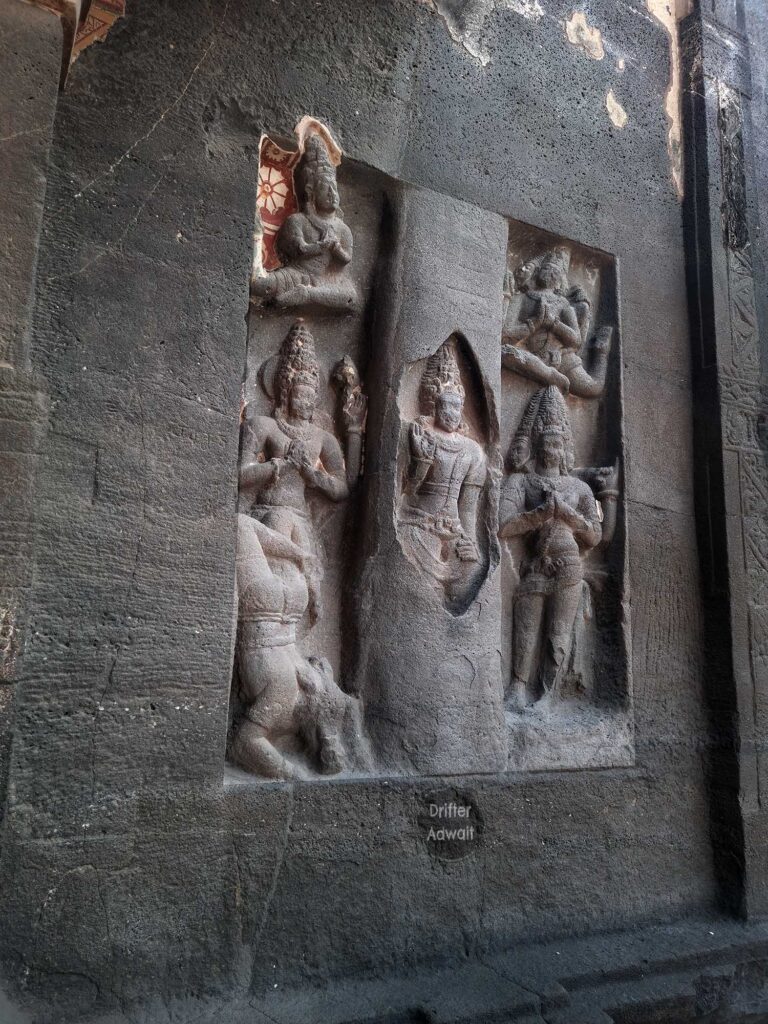
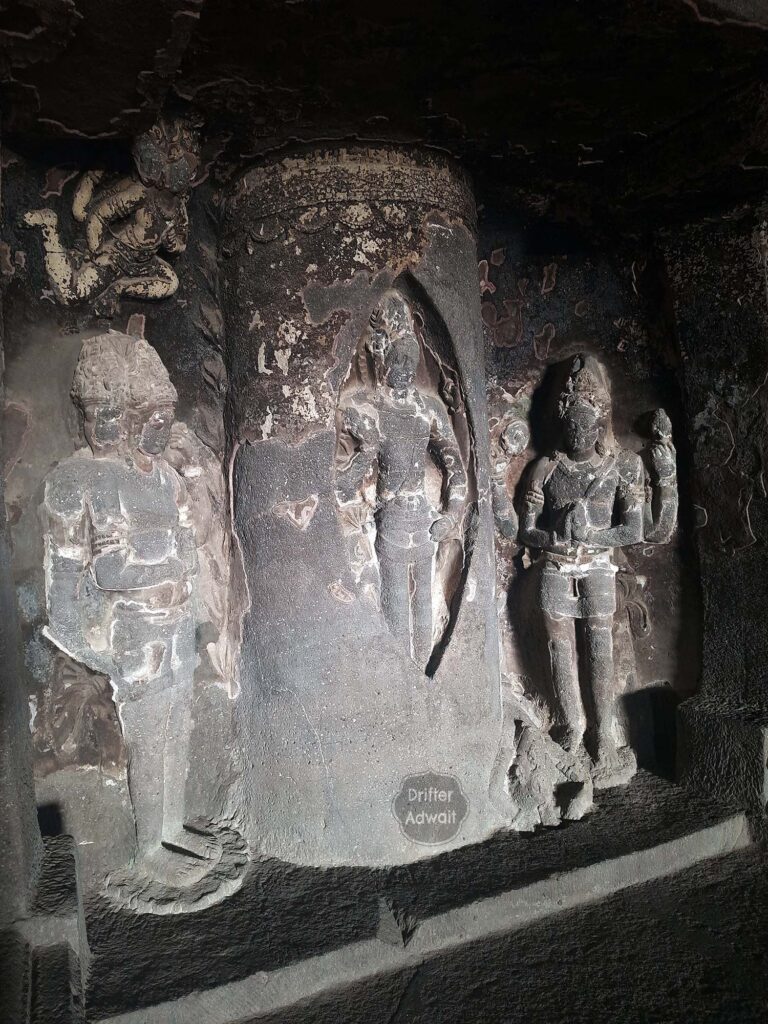
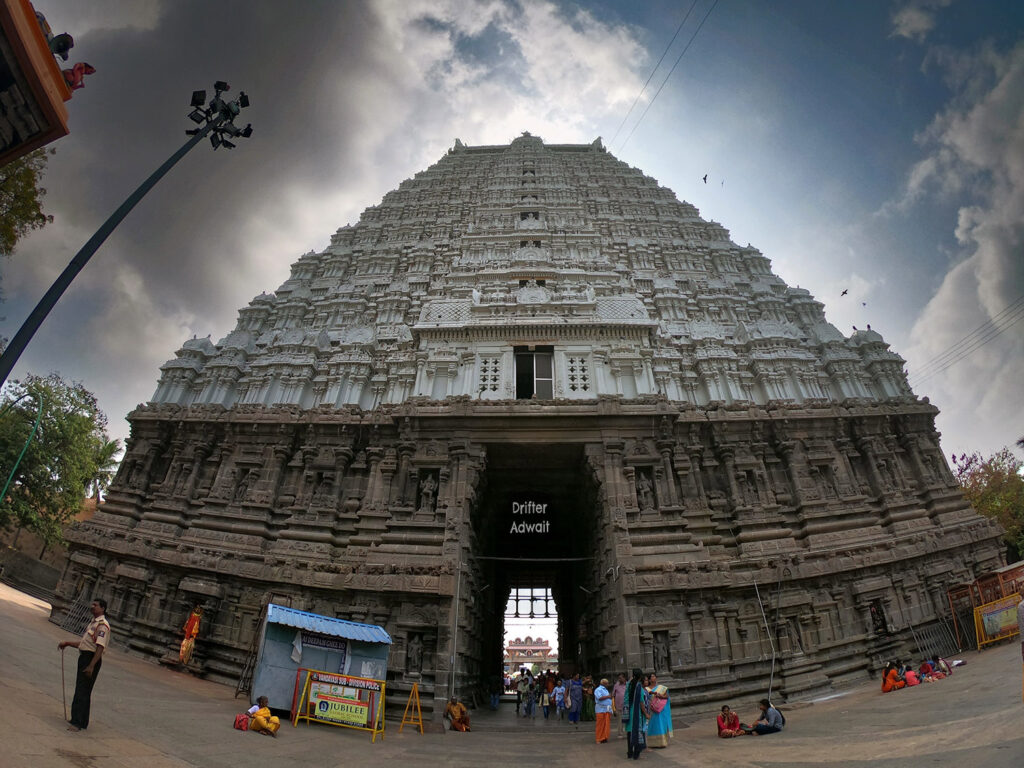
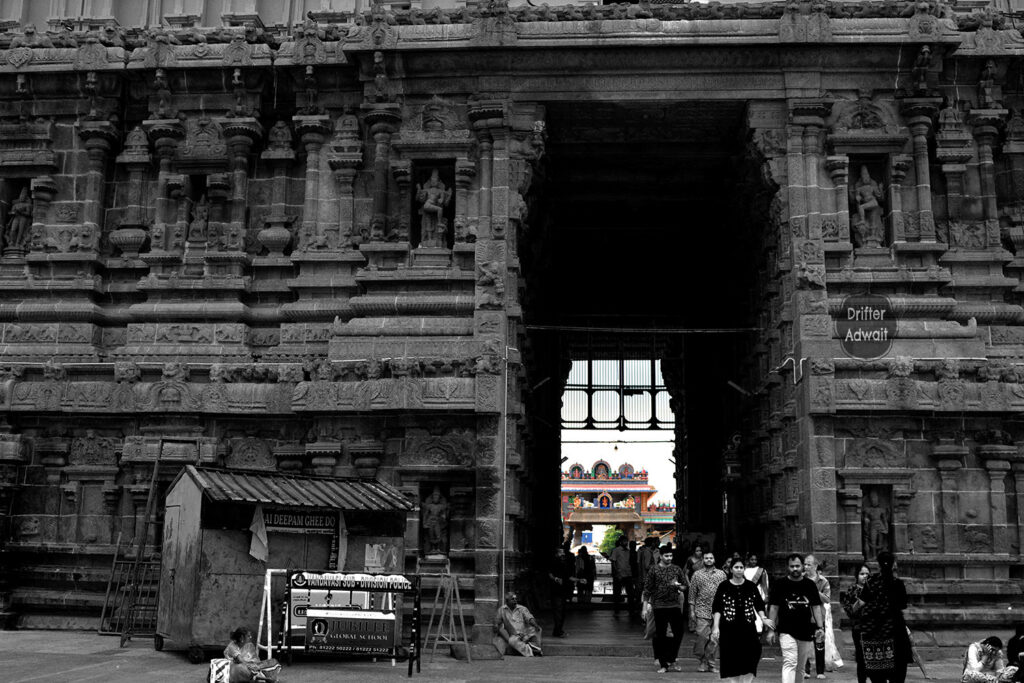

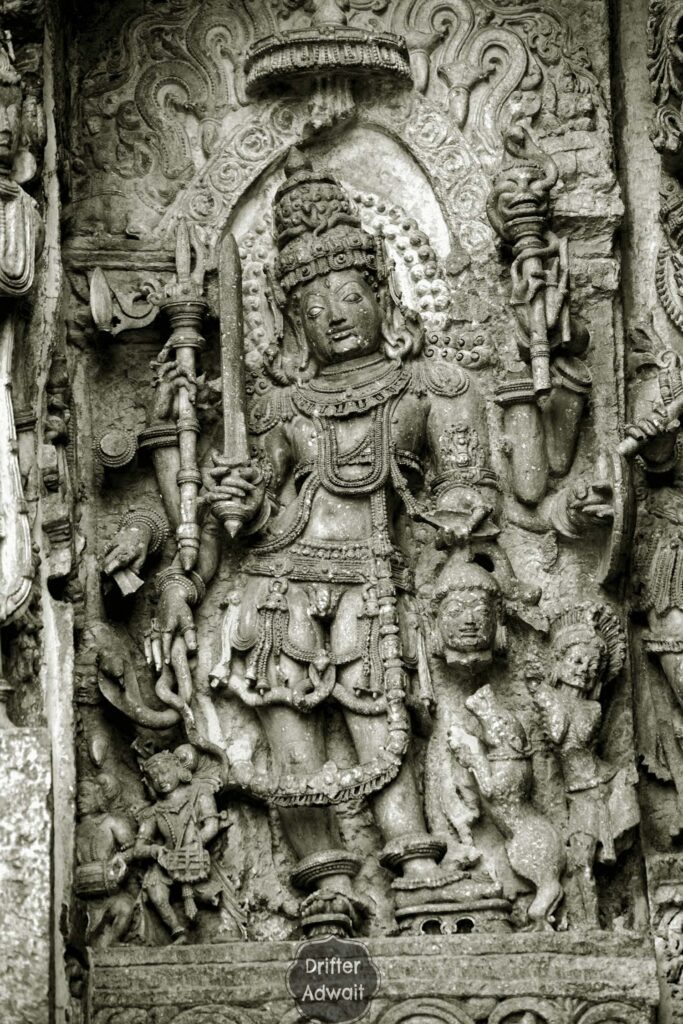
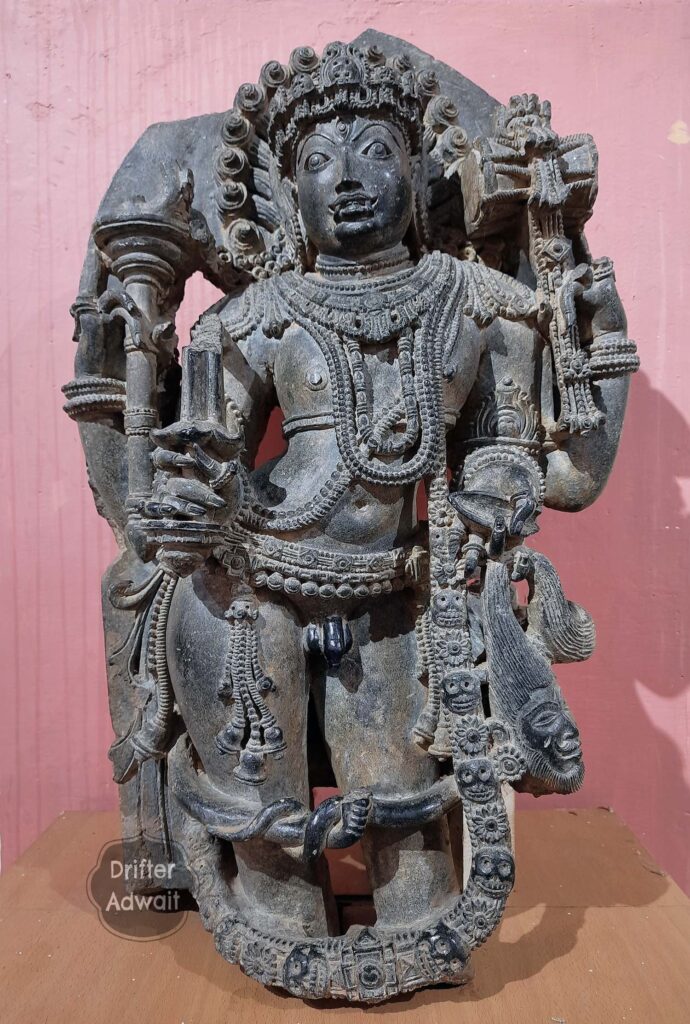



References:
1. Shri Shiv Mahapuran, Volume 1, Geeta Press Gorakhpur, UP, Bharat.
2. KashyapShilpa, March 1987, Dr. R.P.Kulkarni, Maharashtra Rajya Sahitya aani Sanskrutik Mandal, Maharashtra, Bharat
3. Shivamurtaye Namah, Dr. GB Deglurkar, Snehal Publications, Nov 2021, Pune, Maharashtra, Bharat
4. Shiva Emerging from the Linga (Lingodbhavamurti), India, 12th century, On view at The Met Fifth Avenue in Gallery 240, Credit Line: Fletcher Fund, 1962, Accession Number: 62.81, The Metropolitan Museum of Art.
https://www.metmuseum.org/art/collection/search/38137
5. Shiva as the Cosmic Pillar, India, Tamil Nadu, early 12th century, Sculpture Granulite with traces of paint, South and Southeast Asian Art, Los Angeles County Museum of Art, 5905 Wilshire Blvd., Los Angeles, CA 90036
https://collections.lacma.org/node/240775
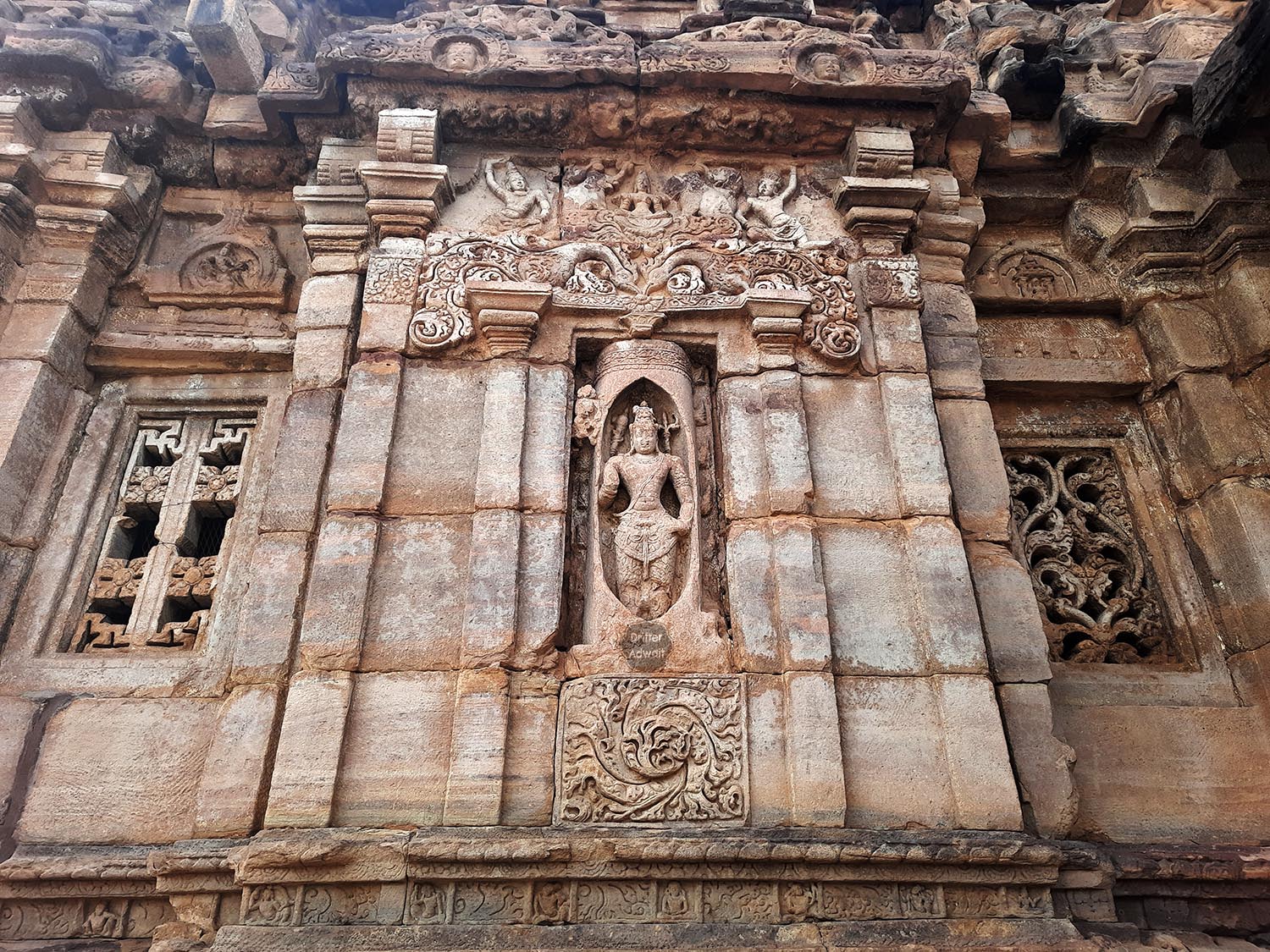
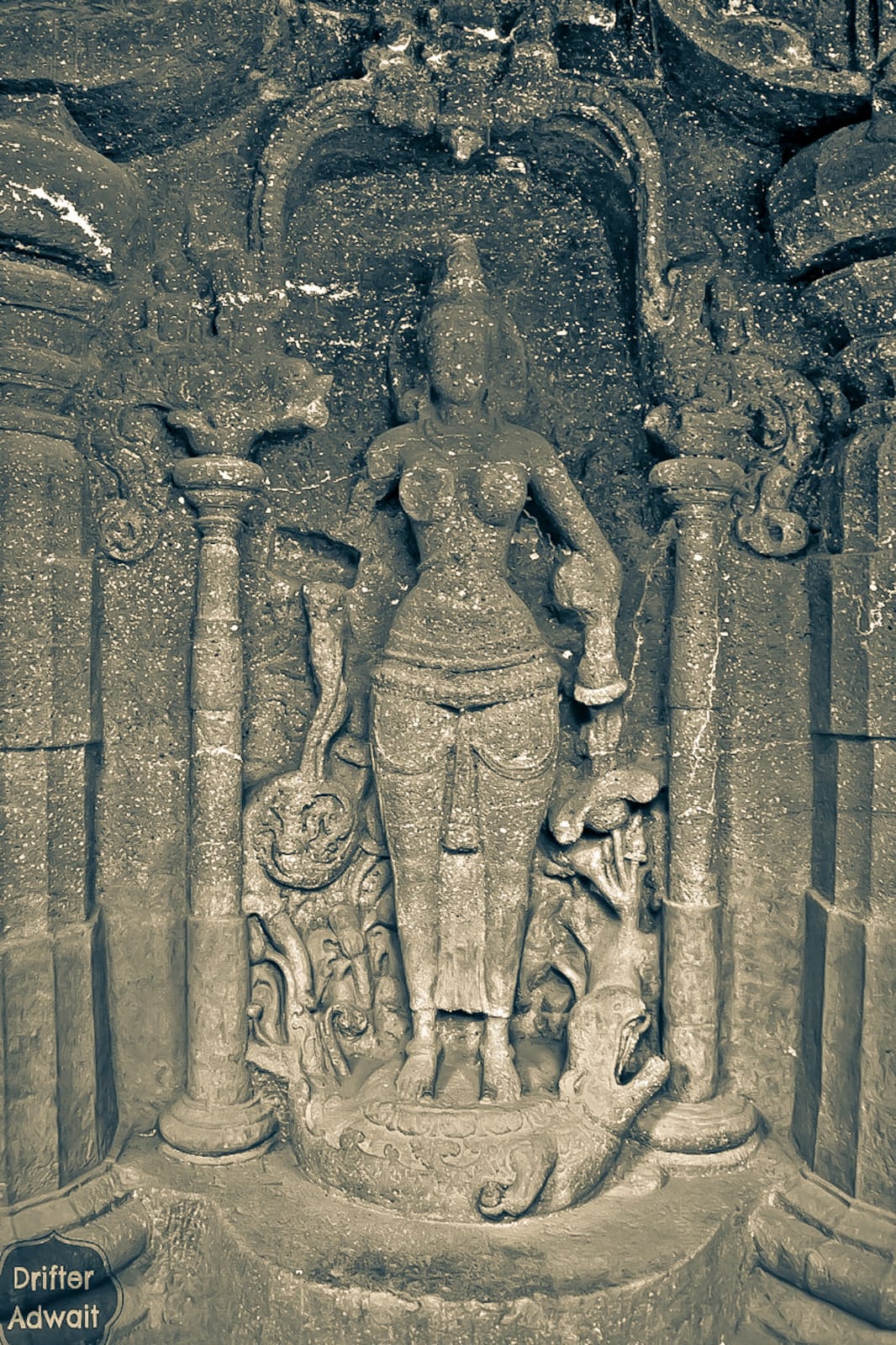


Awesome story ,as always . Your characteristic way of explaining story in lucid language is , unique.
Well , is this a reason why Arunachaleshwara temple is a representative of Agni tatva of lord Shiva ?
Namaste Sudhir Ji, thank you for coming to the blog, and taking a time to go through it. And yes, you are absolutely right; As per the Shiv-Mahapuran, Arunachaleshwara is the temple where this whole incident took place. That might be the reason why the place represents ‘fire’ tatva of Mahadev. Even the Lingam is referred as the Agni Lingam.